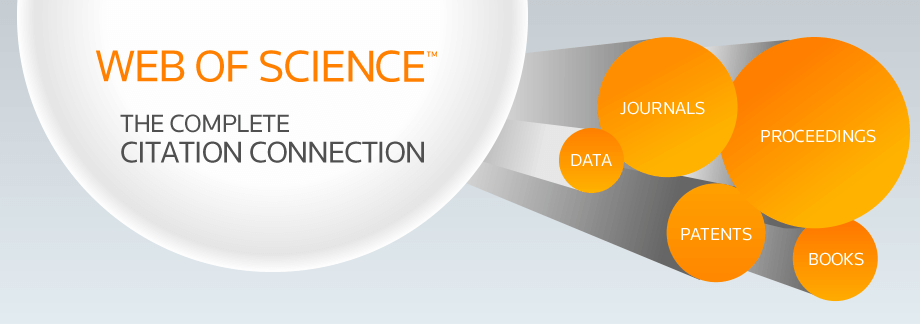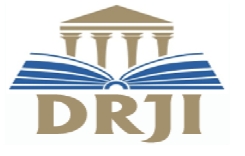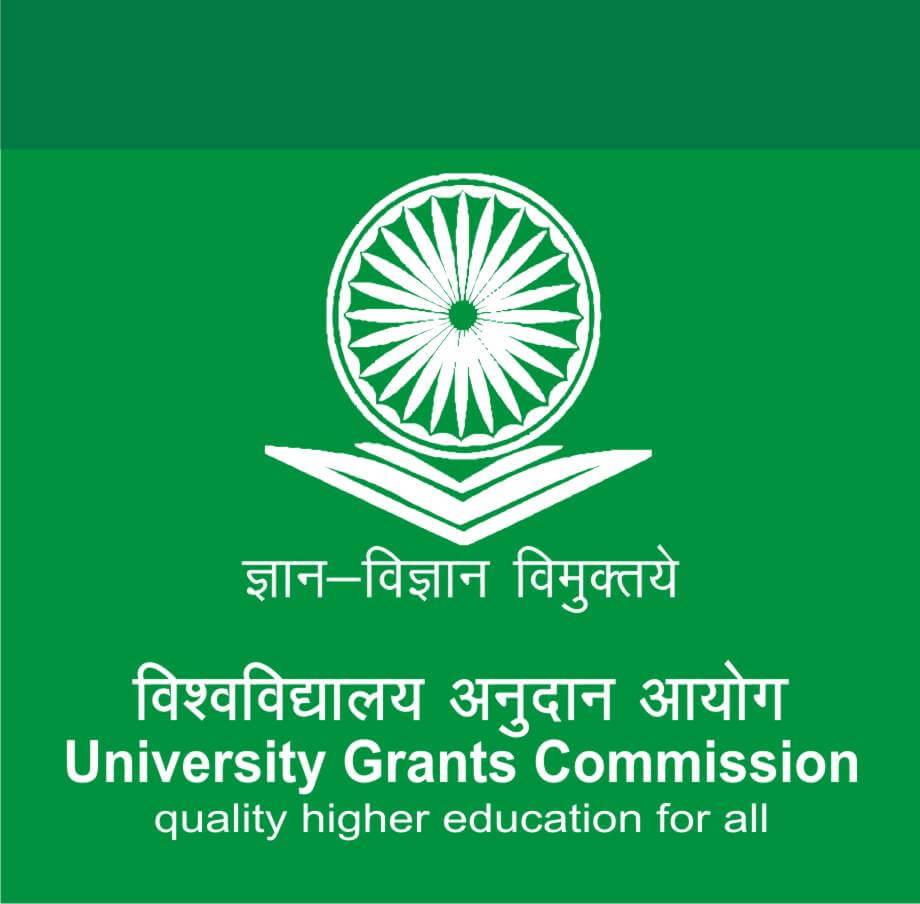INTERNATIONAL JOURNAL OF CREATIVE RESEARCH THOUGHTS - IJCRT (IJCRT.ORG)
International Peer Reviewed & Refereed Journals, Open Access Journal
ISSN Approved Journal No: 2320-2882 | Impact factor: 7.97 | ESTD Year: 2013
Call For Paper - Volume 12 | Issue 4 | Month- April 2024
Scholarly open access journals, Peer-reviewed, and Refereed Journals, Impact factor 7.97 (Calculate by google scholar and Semantic Scholar | AI-Powered Research Tool) , Multidisciplinary, Monthly, Indexing in all major database & Metadata, Citation Generator, Digital Object Identifier(DOI)
Contact Us Click Here
WhatsApp Contact Click Here
Volume 9 | Issue 3 | March-2021
| IJCRT Journal front page | IJCRT Journal Back Page |
Paper Title: A REVIEW PAPER ON THE BASIC CONCEPT OF CBIR FRAMEWORK
Author Name(s): More Praveen, Dr. Pankaj Kawadkar
Published Paper ID: - IJCRTN020026
Register Paper ID - 219064
Publisher Journal Name: IJPUBLICATION, IJCRT
DOI Member ID: 10.6084/m9.doi.one.IJCRTN020026 and DOI :
Author Country : Indian Author, India, - , -, - , | Research Area: Science and Technology Published Paper URL: http://ijcrt.org/viewfull.php?&p_id=IJCRTN020026 Published Paper PDF: download.php?file=IJCRTN020026 Published Paper PDF: http://www.ijcrt.org/papers/IJCRTN020026.pdf
Your Paper Publication Details:
Title: A REVIEW PAPER ON THE BASIC CONCEPT OF CBIR FRAMEWORK
DOI (Digital Object Identifier) :
Pubished in Volume: 9 | Issue: 3 | Year: March 2021
Publisher Name : IJCRT | www.ijcrt.org | ISSN : 2320-2882
Subject Area: Science and Technology
Author type: Indian Author
Pubished in Volume: 9
Issue: 3
Pages: 239-244
Year: March 2021
Downloads: 436
E-ISSN Number: 2320-2882
Abstract
Ongoing advances of innovation in digital imaging and digital storage gadgets make it conceivable to effectively produce, transmit, control and store substantial number of digital images and documents. The term CBIR can be characterized as to recover the image from low level features like texture, shape spatial data or color. In early period of this developing recorded the image was retrieved by text depiction called as Text Based Image Retrieval [TBIR]. The combination of these content-based features is needed for better retrieval of image according to the application. The main test of CBIR framework is to decide the specific/surmised matching image of database to the query image. Over the most recent two decades, CBIR frameworks have been enhanced a lot. In any case, there still stay a few issues which have not been addressed agreeably. In this study we will represent the CBIR and also represent the existing techniques with results by various authors.
Licence: creative commons attribution 4.0
License
Keywords
Digital, Image, Text, Database, query.
License
Paper Title: POLAR STRUCTURES EXTENDING CATMULL-CLARK SUBDIVISION AND PCCM
Author Name(s): Chilukala Mahender Reddy, Dr. Pankaj Kawadkar
Published Paper ID: - IJCRTN020023
Register Paper ID - 219647
Publisher Journal Name: IJPUBLICATION, IJCRT
DOI Member ID: 10.6084/m9.doi.one.IJCRTN020023 and DOI :
Author Country : Indian Author, India, - , -, - , | Research Area: Science and Technology Published Paper URL: http://ijcrt.org/viewfull.php?&p_id=IJCRTN020023 Published Paper PDF: download.php?file=IJCRTN020023 Published Paper PDF: http://www.ijcrt.org/papers/IJCRTN020023.pdf
Your Paper Publication Details:
Title: POLAR STRUCTURES EXTENDING CATMULL-CLARK SUBDIVISION AND PCCM
DOI (Digital Object Identifier) :
Pubished in Volume: 9 | Issue: 3 | Year: March 2021
Publisher Name : IJCRT | www.ijcrt.org | ISSN : 2320-2882
Subject Area: Science and Technology
Author type: Indian Author
Pubished in Volume: 9
Issue: 3
Pages: 206-214
Year: March 2021
Downloads: 437
E-ISSN Number: 2320-2882
Abstract
Surface modelling and design have embraced subdivision surfaces as a compelling representation. They solve some of the major drawbacks of classic spline-based approaches, such as the inability to accommodate arbitrary topologies and the lack of flexibility. To allow multiscale editing procedures to be supported in this article.Methods of subdivision-based modelling with a focus on interactive tools for 3D model style and embellishment.We complete and unite two sets of surface developments that utilize polynomial bits of degree (3,3) to partner a smooth surface with a lattice. The two sets complete one another in that one broadens the subdivisionmodelling worldview, the other the NURBS fix approach to freestyle displaying. Both Catmull-Clark and polar development generalize the bi-cubic spline region. Together, they structure a powerful blend for a smooth item plan: while the CatmullClark region is more appropriate where not many aspects join,polar development pleasantly models areas where numerous aspectsjoin, as while covering expelled highlights. We tell the best way toeffectively join the cross-sections of these two speculations ofbi-cubic spline development.A related however unique speculation of bi-cubic splinesis to demonstrate non-tensor-item designs by a limitedset of flawlessly associated bi-cubic patches. PCCM does as such for designs where Catmull-Clark would apply. Weshow that a solitary NURBS fix can be utilized where polar development would be applied. This spline is independentlyparametrized, yet, utilizing a clever strategy, that's what we showthe surface is C1 and has limited shapes. Modelling non-tensor-product setups using a finite collection of smoothly linked bi-cubic patches is a related but distinct generalization of bi-cubic splines. PCCMdoes so in cases when Catmull-Clark would be appropriate. Wedemonstrate that a single NURBS patch may be utilized in place of a polar subdivision. This spline is unique.parametrized, but we demonstrate using a unique method thatThe surface has restricted curvatures and is C1.
Licence: creative commons attribution 4.0
License
Keywords
Catmull Clark region, subdivision-based modelling, bi-cubic spline region, NURBS.
License
Paper Title: ARTIFICIAL NEURAL NETWORK AND INTERNET OF THINGS (IOT)-BASED PAP TEST DIAGNOSIS
Author Name(s): Anju Lata Agnihotri, Dr. Jitendra Sheethlani
Published Paper ID: - IJCRTN020022
Register Paper ID - 219643
Publisher Journal Name: IJPUBLICATION, IJCRT
DOI Member ID: 10.6084/m9.doi.one.IJCRTN020022 and DOI :
Author Country : Indian Author, India, - , -, - , | Research Area: Science and Technology Published Paper URL: http://ijcrt.org/viewfull.php?&p_id=IJCRTN020022 Published Paper PDF: download.php?file=IJCRTN020022 Published Paper PDF: http://www.ijcrt.org/papers/IJCRTN020022.pdf
Your Paper Publication Details:
Title: ARTIFICIAL NEURAL NETWORK AND INTERNET OF THINGS (IOT)-BASED PAP TEST DIAGNOSIS
DOI (Digital Object Identifier) :
Pubished in Volume: 9 | Issue: 3 | Year: March 2021
Publisher Name : IJCRT | www.ijcrt.org | ISSN : 2320-2882
Subject Area: Science and Technology
Author type: Indian Author
Pubished in Volume: 9
Issue: 3
Pages: 199-205
Year: March 2021
Downloads: 448
E-ISSN Number: 2320-2882
Abstract
In this paper, we suggest using a serverclient framework model that makes use of Internet of Things (IoT) technology to manage Pap smear imaging data obtained from a high-resolution magnifying lens and to categorise those images.by learning using an Artificial Neural Network (ANN)server-side computation The Internet of Things (IoT) has the potential to enhance those magnifying tools. To communicate with one another while the ANN empowers a new generationmethod for high-precision imaging grouping. We make use ofAs a contribution to our proposed plan, 917 high-goal photographs were submitted.The technique achieves a 0.8834 root mean square error and0.6643 is the connection coefficient.Cervicography, another analytic tool, provides long-term, objective documenting of both common and atypical cervical cases. To coordinate visual colposcopy amplification and aim, the projected cervicogram is nearly same. An expert can get a cervicogram and send it to a professional for evaluation. The demonstrative precision of coloscopic, cytological, and cervicographic findings was investigated in a study of 700 women. A total of 136 cases of dysplasia or cancer were investigated by coordinated biopsy in 296 women who had a typical cytologic findings. Both colposcopy and cervicographic findings were suspected in 91.1 percent of the cases; cervicography was used only in 2.9 percent of the cases, and colposcopy was used exclusively in 5.9 percent of the cases. Nine instances (2.2 percent) of dysplasia were found in 404 routinely tested individuals who had no previous odd cytologic results.
Licence: creative commons attribution 4.0
License
Keywords
Cervicogram, Colposcopic, Cervicography, Artificial Neural Network, Cytologic.
License
Paper Title: A STUDY ON WEB APPLICATION DEVELOPMENT AND CMS MODEL-DRIVEN TRANSFORMATIONS
Author Name(s): Bharat Singh Senwal, Dr. Jitendra Sheethlani
Published Paper ID: - IJCRTN020016
Register Paper ID - 216436
Publisher Journal Name: IJPUBLICATION, IJCRT
DOI Member ID: 10.6084/m9.doi.one.IJCRTN020016 and DOI :
Author Country : Indian Author, India, - , -, - , | Research Area: Science and Technology Published Paper URL: http://ijcrt.org/viewfull.php?&p_id=IJCRTN020016 Published Paper PDF: download.php?file=IJCRTN020016 Published Paper PDF: http://www.ijcrt.org/papers/IJCRTN020016.pdf
Your Paper Publication Details:
Title: A STUDY ON WEB APPLICATION DEVELOPMENT AND CMS MODEL-DRIVEN TRANSFORMATIONS
DOI (Digital Object Identifier) :
Pubished in Volume: 9 | Issue: 3 | Year: March 2021
Publisher Name : IJCRT | www.ijcrt.org | ISSN : 2320-2882
Subject Area: Science and Technology
Author type: Indian Author
Pubished in Volume: 9
Issue: 3
Pages: 138-147
Year: March 2021
Downloads: 509
E-ISSN Number: 2320-2882
Abstract
A Content Management System (CMS) is an application which licenses to fitting, control, adjust, erase and change content in a compelling and dynamic manner. Content Management Software (CMS) is a program that grants you to manage the substance on your site. A Content Management Software consistently has two sections: a Content Management Application (CMA) and a Content Delivery Application (CDA). The Content Management System is a sort of web application that has actually obtained reputation (CMS). Model-Driven Engineering (MDE) techniques, of course, hope to speed up the headway connection by focusing in on models and thoughts as opposed to acquiring code.CMS structures might potentially transform into the new standard for web application designing. The main aim of this study is to assess the Web Application Development And Cms Model-Driven Transformations. We have present a couple of techniques for making demonstrating dialects, similarly as specific points that displaying language organizers should ponder. Regardless, it is crazy to expect that metamodels - and models - don't change for a really long time.
Licence: creative commons attribution 4.0
License
Keywords
Content, Management, Software, CMS, program, Application, data, etc.
License
Paper Title: SUCCESSFUL PROCESS MANAGEMENT IN ORGANISATIONS BY USING SPI APPROACH
Author Name(s): Puppala Krupa Sagar, Dr. Pankaj Kawadkar
Published Paper ID: - IJCRTN020014
Register Paper ID - 216446
Publisher Journal Name: IJPUBLICATION, IJCRT
DOI Member ID: 10.6084/m9.doi.one.IJCRTN020014 and DOI :
Author Country : Indian Author, India, - , -, - , | Research Area: Science and Technology Published Paper URL: http://ijcrt.org/viewfull.php?&p_id=IJCRTN020014 Published Paper PDF: download.php?file=IJCRTN020014 Published Paper PDF: http://www.ijcrt.org/papers/IJCRTN020014.pdf
Your Paper Publication Details:
Title: SUCCESSFUL PROCESS MANAGEMENT IN ORGANISATIONS BY USING SPI APPROACH
DOI (Digital Object Identifier) :
Pubished in Volume: 9 | Issue: 3 | Year: March 2021
Publisher Name : IJCRT | www.ijcrt.org | ISSN : 2320-2882
Subject Area: Science and Technology
Author type: Indian Author
Pubished in Volume: 9
Issue: 3
Pages: 118-126
Year: March 2021
Downloads: 487
E-ISSN Number: 2320-2882
Abstract
SPI exercises in programming affiliations are as frequently as conceivable acted considering all around portrayed reference models distinguishing issues is a crucial part in all product cycle improvement. A lot of variable accepts huge part in programming process. The rule reason for this work is to establish the framework for SPI by discussing the piece of programming, the changes in programming advancement systems and programming improvement process models, and the quality turn of events. The main aim of this study is to discuss the Successful Process Management in Organizations by Using SPI Approach. In addition, SPI experiences are analyzed. This designing exploration technique gives a practical method for managing SPI strategy headway research, as a result of its in-manufactured considered constant turn of events and change. Moreover, it slowly makes and evaluates SPI a strategy, intertwining means to achieve the recently referenced essential accomplishment factors. The investigation relies upon a couple of modern context oriented examinations.
Licence: creative commons attribution 4.0
License
Keywords
Management, SPI, Software, Programs, Organization etc.
License
Paper Title: WEB REASONING AND ANSWER SET PROGRAMMING WITH SEMANTIC FINITE AND INFINITE SET PROGRAMMING
Author Name(s): G Priyanka Jeeva Karunya, Dr. Pankaj Kawadkar
Published Paper ID: - IJCRTN020012
Register Paper ID - 216439
Publisher Journal Name: IJPUBLICATION, IJCRT
DOI Member ID: 10.6084/m9.doi.one.IJCRTN020012 and DOI :
Author Country : Indian Author, India, - , -, - , | Research Area: Science and Technology Published Paper URL: http://ijcrt.org/viewfull.php?&p_id=IJCRTN020012 Published Paper PDF: download.php?file=IJCRTN020012 Published Paper PDF: http://www.ijcrt.org/papers/IJCRTN020012.pdf
Your Paper Publication Details:
Title: WEB REASONING AND ANSWER SET PROGRAMMING WITH SEMANTIC FINITE AND INFINITE SET PROGRAMMING
DOI (Digital Object Identifier) :
Pubished in Volume: 9 | Issue: 3 | Year: March 2021
Publisher Name : IJCRT | www.ijcrt.org | ISSN : 2320-2882
Subject Area: Science and Technology
Author type: Indian Author
Pubished in Volume: 9
Issue: 3
Pages: 95-105
Year: March 2021
Downloads: 490
E-ISSN Number: 2320-2882
Abstract
The Semantic Web is actually apt to demand knowledge and energy certain. This's pricey, and so it might well be restricted to certain domains on the internet which see a powerful edge in the use of its, though over time as the expertise gets much more commonplace it must get more inexpensive. Furthermore, the' network effect' could work as both an incentive as well as a screen. One of the primary benefits of supplying Semantic Web annotation is actually that's could be discussed and can easily get use to others, consequently when there's little details to share, then there's very little motivation to take the excess cost of sharing; however, after the ball begins to roll, there's an exponential benefit in merging the personal data of yours with others. The main aim of this study is to discuss the Semantic Web Reasoning and Answer Set Programming with Finite and Infinite Set Programming. It is concluded that the chance to exchange knowledge with outside energy sources in a completely declarative framework like ASP is particularly crucial in view of applications of the Semantic Web region.
Licence: creative commons attribution 4.0
License
Keywords
Semantic Web, Answer Set Programming, finite, infinite, programming, Description Logics etc.
License
Paper Title: AN ANALYSIS ON MOBILE AGENT FRAMEWORK FOR NETWORK INTRUSION DETECTION SYSTEM
Author Name(s): Kamal Kishore Prasad, Rajendra Singh Kushwar
Published Paper ID: - IJCRTN020004
Register Paper ID - 216438
Publisher Journal Name: IJPUBLICATION, IJCRT
DOI Member ID: 10.6084/m9.doi.one.IJCRTN020004 and DOI :
Author Country : Indian Author, India, - , -, - , | Research Area: Science and Technology Published Paper URL: http://ijcrt.org/viewfull.php?&p_id=IJCRTN020004 Published Paper PDF: download.php?file=IJCRTN020004 Published Paper PDF: http://www.ijcrt.org/papers/IJCRTN020004.pdf
Your Paper Publication Details:
Title: AN ANALYSIS ON MOBILE AGENT FRAMEWORK FOR NETWORK INTRUSION DETECTION SYSTEM
DOI (Digital Object Identifier) :
Pubished in Volume: 9 | Issue: 3 | Year: March 2021
Publisher Name : IJCRT | www.ijcrt.org | ISSN : 2320-2882
Subject Area: Science and Technology
Author type: Indian Author
Pubished in Volume: 9
Issue: 3
Pages: 20-26
Year: March 2021
Downloads: 504
E-ISSN Number: 2320-2882
Abstract
Licence: creative commons attribution 4.0
License
Keywords
Agent, Misuse, Mobile, Intrusion, Detection, Wireless.
License
Paper Title: EATING BEHAVIOR OF MALE SHIFT WORKERS
Author Name(s): Harsha Dua, Dr. Sonia Kanwar
Published Paper ID: - IJCRT2103753
Register Paper ID - 252970
Publisher Journal Name: IJPUBLICATION, IJCRT
DOI Member ID: 10.6084/m9.doi.one.IJCRT2103753 and DOI :
Author Country : Indian Author, India, - , -, - , | Research Area: Science and Technology Published Paper URL: http://ijcrt.org/viewfull.php?&p_id=IJCRT2103753 Published Paper PDF: download.php?file=IJCRT2103753 Published Paper PDF: http://www.ijcrt.org/papers/IJCRT2103753.pdf
Your Paper Publication Details:
Title: EATING BEHAVIOR OF MALE SHIFT WORKERS
DOI (Digital Object Identifier) :
Pubished in Volume: 9 | Issue: 3 | Year: March 2021
Publisher Name : IJCRT | www.ijcrt.org | ISSN : 2320-2882
Subject Area: Science and Technology
Author type: Indian Author
Pubished in Volume: 9
Issue: 3
Pages: 6480-6485
Year: March 2021
Downloads: 25
E-ISSN Number: 2320-2882
Abstract
The purpose of this study was to analyze Eating Behavior of Male Shift Workers. To serve the purpose of the present study 500 subjects were selected by random sampling technique. The subjects belonged to the IT companies of Chandigarh (UT). All subjects were male in between the age of 18 -35 years. Keeping in view the suitability and validity of Adults, Eating behavior questionnaire (Claudia, Alison, Helen, Clare, Jane, Rebecca, 2015) was used to collect the data. It shows that Night shift workers having significantly higher mean score on almost all the dimension of eating behavior i.e. Emotional over eating (EOE), Emotional under eating (EUE), Food fussiness (FF), Food Responsiveness (FR), Slowness in Eating (SE), Hunger (H) and Satiety Responsiveness (SR). Analysis of variance ANOVA was used to know the eating behavior of IT male workers those are working in day and night shifts. Mean, SD and t-values were also calculated to find out the direction of differences. The result of the present study revealed significant differences on most of the sub domains of the eating behavior.
Licence: creative commons attribution 4.0
License
Keywords
EATING BEHAVIOR OF MALE SHIFT WORKERS
License
Paper Title: HISTORICAL SIGNIFICANCE OF KARNATAKA RIVERS
Author Name(s): Prof. Vilas N. Kamble
Published Paper ID: - IJCRT2103752
Register Paper ID - 248141
Publisher Journal Name: IJPUBLICATION, IJCRT
DOI Member ID: 10.6084/m9.doi.one.IJCRT2103752 and DOI :
Author Country : Indian Author, India, - , -, - , | Research Area: Science and Technology Published Paper URL: http://ijcrt.org/viewfull.php?&p_id=IJCRT2103752 Published Paper PDF: download.php?file=IJCRT2103752 Published Paper PDF: http://www.ijcrt.org/papers/IJCRT2103752.pdf
Your Paper Publication Details:
Title: HISTORICAL SIGNIFICANCE OF KARNATAKA RIVERS
DOI (Digital Object Identifier) :
Pubished in Volume: 9 | Issue: 3 | Year: March 2021
Publisher Name : IJCRT | www.ijcrt.org | ISSN : 2320-2882
Subject Area: Science and Technology
Author type: Indian Author
Pubished in Volume: 9
Issue: 3
Pages: 6469-6479
Year: March 2021
Downloads: 87
E-ISSN Number: 2320-2882
Abstract
The rivers of Karnataka have played a significant role in the state's history and culture, shaping its socio-economic, ecological, and cultural landscape over the centuries. Here is an abstract highlighting the historical significance of Karnataka's rivers: The rivers of Karnataka, including the Krishna, Cauvery, Tungabhadra, and many smaller tributaries, hold immense historical significance for the state. These water bodies have been integral to the development of Karnataka's civilization, agriculture, trade, and culture for millennia.1.Agriculture and Irrigation: Karnataka's rivers have been a lifeline for agriculture. The fertile alluvial plains along the banks of rivers like the Cauvery have supported extensive agricultural practices since ancient times. The construction of irrigation canals and reservoirs, dating back to the Chola and Hoysala periods, facilitated controlled water distribution, leading to increased agricultural productivity.2. Trade and Commerce: The rivers served as vital trade routes in antiquity. The Cauvery River, for instance, facilitated trade between the Chola Dynasty in the south and the Chalukya Dynasty in the north. The ports of ancient Karnataka, such as Muziris (modern-day Kodungallur) on the Malabar Coast, were linked to the interior through river networks.3. Cultural Heritage: Karnataka's rich cultural heritage is deeply intertwined with its rivers. Temples and settlements have sprung up along the riverbanks, and the state's architecture and art often feature motifs related to river worship. The town of Talakadu, located on the banks of the Cauvery, is known for its submerged temples that emerge periodically when the river's water levels recede.4.Historical Empires and Kingdoms: Many historical empires and kingdoms, such as the Chalukyas, Cholas, Hoysalas, Vijayanagara Empire, and the Wodeyar Dynasty, established their capitals or important cities near these rivers. The rivers provided strategic advantages, access to water, and agricultural resources that supported these powerful dynasties.5. Hydropower and Industrialization: In the modern era, the rivers have contributed to the state's industrialization and energy production. The construction of dams and reservoirs on rivers like the Tungabhadra and Krishna has harnessed hydropower for electricity generation and irrigation, fostering economic development.6. Ecological Importance: Beyond their historical and cultural significance, Karnataka's rivers are crucial for maintaining ecological balance and biodiversity. They support diverse ecosystems, providing habitats for various species of flora and fauna.
Licence: creative commons attribution 4.0
License
Keywords
Krishna, Cauvery, Tungabhadra, Saraswati,kaali, Bhima river
License
Paper Title: CHARACTERS IN CLASSIC THEATRE: A STUDY OF NAYAKA AND NAYIKA IN SANSKRIT DRAMA
Author Name(s): Dr. M. Subbiah
Published Paper ID: - IJCRT2103751
Register Paper ID - 245432
Publisher Journal Name: IJPUBLICATION, IJCRT
DOI Member ID: 10.6084/m9.doi.one.IJCRT2103751 and DOI :
Author Country : Indian Author, India, - , -, - , | Research Area: Science and Technology Published Paper URL: http://ijcrt.org/viewfull.php?&p_id=IJCRT2103751 Published Paper PDF: download.php?file=IJCRT2103751 Published Paper PDF: http://www.ijcrt.org/papers/IJCRT2103751.pdf
Your Paper Publication Details:
Title: CHARACTERS IN CLASSIC THEATRE: A STUDY OF NAYAKA AND NAYIKA IN SANSKRIT DRAMA
DOI (Digital Object Identifier) :
Pubished in Volume: 9 | Issue: 3 | Year: March 2021
Publisher Name : IJCRT | www.ijcrt.org | ISSN : 2320-2882
Subject Area: Science and Technology
Author type: Indian Author
Pubished in Volume: 9
Issue: 3
Pages: 6462-6468
Year: March 2021
Downloads: 94
E-ISSN Number: 2320-2882
Abstract
This research article provides an in-depth exploration of the archetype of Nayaka (Heroes) in Sanskrit drama. Drawing from classical Indian theatre and the Natya Shastra, the article categorizes Nayakas into distinct character types, including Dhira Nayaka, Vir Nayaka, Abhinaya Nayaka, Dharmabhinaya Nayaka, and Nirddesa Nayaka, and delves into their roles and emotional depth. Through examples from Sanskrit plays, it illustrates how these archetypal heroes contribute to the richness and complexity of the narratives. The article also discusses the art of character portrayal, emphasizing the role of costume, makeup, gestures, and abhinaya in bringing these heroes to life on the classical Indian stage. The study underscores the enduring significance of Nayakas in Sanskrit drama, not only as characters but as embodiments of human virtues and emotional resonance, continuing to inspire and resonate with contemporary audiences.
Licence: creative commons attribution 4.0
License
Keywords
Nayaka, Heroes, Sanskrit Drama, Character Archetypes, Emotional Depth, Dhira Nayaka, Vir Nayaka, Abhinaya Nayaka, Dharmabhinaya Nayaka, Nirddesa Nayaka, Characterization, Abhinaya, Mudras, Sanskrit Plays, Classical Indian Theatre
License
April 2024
Volume 12 | Issue 4
Last Date :
30-Apr-2024
Submit Manuscript Online Impact Factor: 7.97 Review Results : Within 02-03 Days Paper Publication : Within 02-03 Days

ISSN: 2320-2882 Impact Factor: 7.97 and ISSN APPROVED Journal Starting Year (ESTD) : 2013

ISSN: 2320-2882 Impact Factor: 7.97 and ISSN APPROVED Journal Starting Year (ESTD) : 2013

CONFERENCE PROPOSAL CONFERENCE PROCEEDINGS






































































